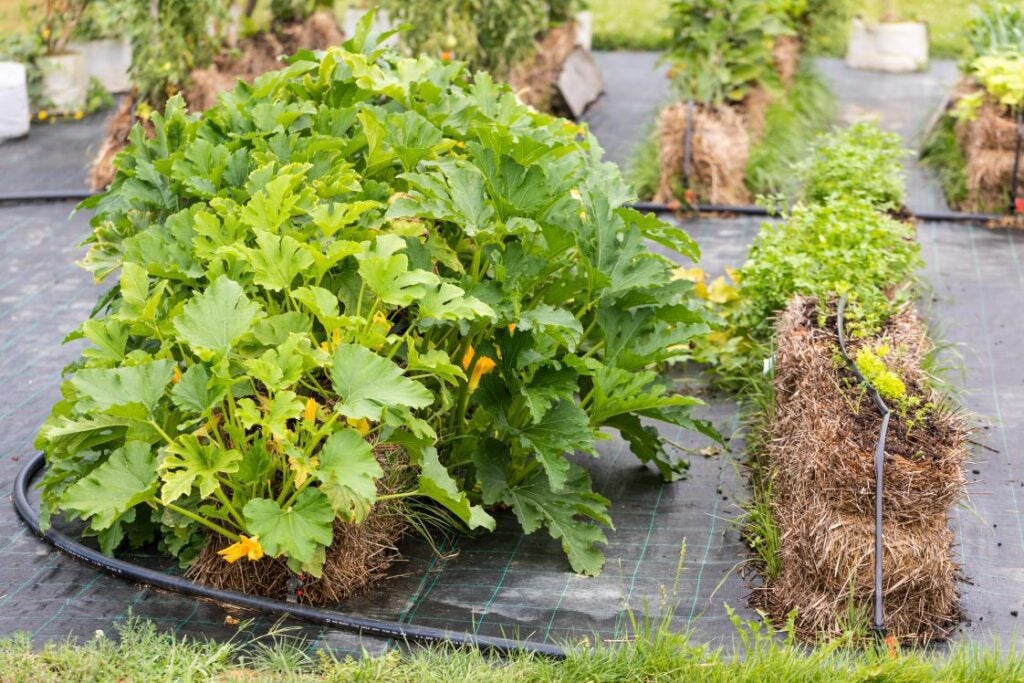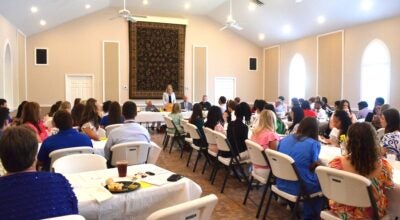Straw bale gardens, perfect for small spaces
Published 11:47 am Monday, April 15, 2024

- Compact, ready-made gardens can be easily cultivated in the backyard, on the patio or on the front stoop. Photo courtesy of aces.edu.
By Staff Reports
No space for a garden plot or even a raised-bed garden? This gardening season, don’t let these limitations stop you from growing fresh produce. Straw bale gardens are the perfect option when space is limited. These compact, ready-made gardens can be easily cultivated in the backyard, on the patio or on the front stoop.
According to Crenshaw County Extension Coordinator Amanda Evans, straw bale gardening offers an excellent option for those with limited space or a desire to experiment with something new. Evans recommends starting preparations approximately two weeks before planting to ensure optimal bale conditioning. With its potential to maximize yield in constrained environments, straw bale gardening presents an exciting opportunity for urban and suburban growers alike.
“If you are looking for a new way to grow vegetables because of limited space or you just want to try something different, straw bale gardening is a great option,” Evans said. “Just make sure you get started about two weeks before you’re ready to plant to allow enough time to prepare your bales.”
Benefits of Straw Bale Gardening
Dani Carroll, an Alabama Cooperative Extension System home grounds, gardens and home pests regional agent, recommends straw bale gardening for everyone, especially those who have difficulty handling tools like shovels or trowels.
“Straw bale gardening is simply planting vegetables into a straw bale that has been conditioned or gone through a composting phase,” Carroll said. “These are great for urban areas and homeowners with smaller plots.”
Since urban areas often lack good soil or space, straw bale gardens are a great way to take advantage of available space. When properly conditioned, these bales also contain great nutrients for the plants.
Conditioning a Straw Bale
Carroll said for these gardens, wheat straw bales work best. Unfortunately, pine straw bales do not break down enough, and hay bales may contain more weed seeds. After buying your wheat straw bale, saturate it with water before adding fertilizer. Use a water-soluble fertilizer that is high in nitrogen. Thoroughly rewater the bale each time you fertilize. On day 10, add 1 cup of dolomitic lime over the top of the bale and water it in. After that, add some balanced fertilizer for several days until the conditioning (or composting) process is finished. The process should take about two weeks.
Planting in a Straw Bale
A straw bale garden behind an outdoor building.Once conditioning is complete, you are ready to plant just as you would any other garden. However, using transplants is the preferred method of choice, as seeds are more difficult to germinate in straw bale gardens. Carroll said there are certain types of plants suitable for straw bale gardens.
“I like to grow herbs, flowers and traditional vegetables,” said Carroll. “Shorter plants — like tomatoes, broccoli, cabbage and greens — tend to work best. Taller, larger or heavier plants could knock the bale off balance, catch too much wind or simply be too large to plant in a single bale.”
Maintenance for a straw bale garden is the same as if it was a basic, in-ground garden. Gardeners should make sure to water regularly until their straw bale gardens have finished producing. Gardeners may be able to get more than one planting out of one straw bale.
The Alabama Extension publication “Straw Bale Gardening” suggests recycling bales after they are depleted. The bales are great as mulch or compost.
More Information
Visit the Lawn & Garden section of www.aces.edu to learn more about gardening in Alabama. Still need some assistance? Contact the Alabama Extension Master Gardener Helpline at 1-877-252-4769 for help with your lawn and garden needs or call the Crenshaw County Extension office at 334-335-6312.





